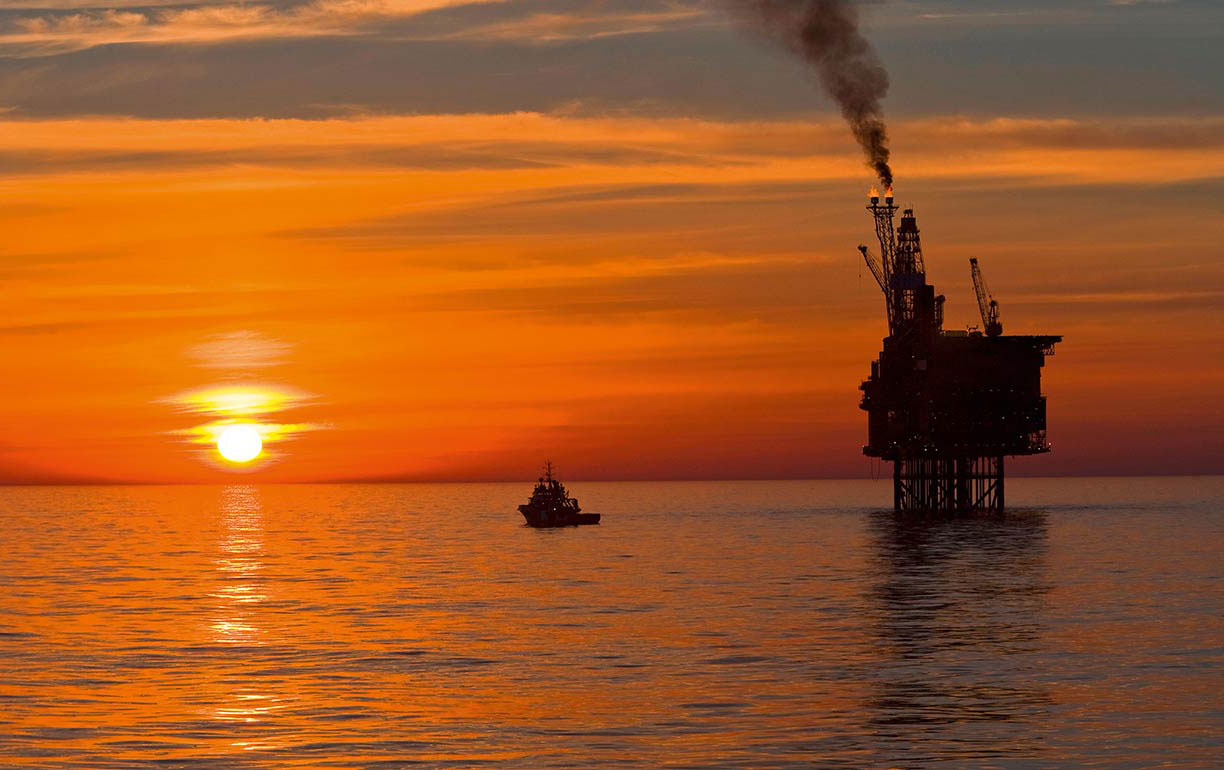
A well-oiled service.
Drill heads, valves, “Christmas trees”: if spare parts are needed on the oil and gas platforms far off Africa’s coasts, things have to move at lightning speed.
But what if parts have to be replaced so that operation can continue? That is when Lufthansa Cargo comes into play – as happened recently when they transported a drill head for a production platform off Namibia. Manufactured in the Norwegian city of Bergen (BGO), the precious cargo reached Stavanger Airport, 200 kilometers away, by truck, in good time for the take-off of a Lufthansa Cargo freighter for Frankfurt. From there it traveled in the freighter to Johannesburg in South Africa. The third and last leg of the air journey led to Walvis Bay (WVB) on the coast of Namibia.
There, the crew of a platform supply ship took delivery of the drill head. The transit time of the td.Pro shipment: a mere five days. Oil and gas are some of Lufthansa Cargo’s key industries. Whether in Norway and South Africa or other industry hotspots such as the USA or Brazil: they are completely familiar with customers’ requirements. Each year the team in South Africa alone, with over 30 platforms in its catchment area, handles shipments with a combined weight of up to 700,000 kilograms.

Common cargo: safety valves, drill rods up to eight meters long or even components of “Christmas trees” – devices designed for the controlled removal of oil and gas from the well. A good many supplies have to arrive quicker than the aforementioned drill head – no problem thanks to Lufthansa Cargo’s express products. This way, a td.Flash shipment from Bergen to Walvis Bay can save a full day. It is even faster with Courier.Solutions or Emergency.Solutions. The service also includes a hotline that oil and gas customers can reach 365 days a year, around the clock. All to achieve a single goal: smooth operation on the platforms out there in the sea.
Most drill heads made of specially resistant steel – such as this tricone roller bit – cost several tens of thousands of dollars.
Henry L. Williams was the first to try it.
Off the coast of Southern California the industrialist had a rig built and a drill head driven into the seabed. It was a success: the oil gushed freely from the Summerland Field – discovered just a short time before. Offshore oil production was born. In 1896. Williams’ rig stood on a pier, only around 100 meters from the beach. An oil platform from which you could no longer see the coast only went into operation in 1947. “Kermac Rig no. 16” defied the waves a distant ten miles out in the Gulf of Mexico.
Since then the importance of offshore has steadily grown. Many oil as well as gas deposits on land will become exhausted in the foreseeable future or can only be exploited at enormous cost now. That is why the industry is placing ever greater emphasis on production from the sea.
For oil as well as gas, the offshore share is now around a third. Many of the most recently discovered oil and gas fields are located far out – off West Africa for example, where Nigeria and Angola are among the world’s largest players, but countries such as South Africa or Ghana also have their share.
Platforms at a distance of 100 or 150 kilometers from the coast are no longer unusual. Out there, companies are drilling for oil and gas at depths of many hundreds, often even way in excess of 1,000 meters. Some of the floating platforms – held in place by pontoons over water – are gigantic in size. “Pazflor” off Angola, for example, is as large as three soccer pitches. Alongside production, it also allows for the partial processing of the raw materials. The monsters themselves are wickedly expensive, as is the cost of operating them. Nevertheless, they pay off – provided that their complex engineering works smoothly around the clock.
Photos:
Mauritius Images / Alamy, dreamstime.com / Yuyang
Henry L. Williams was the first to try it.
|
Off the coast of Southern California the industrialist had a rig built and a drill head driven into the seabed. It was a success: the oil gushed freely from the Summerland Field – discovered just a short time before. Offshore oil production was born. In 1896. Williams’ rig stood on a pier, only around 100 meters from the beach. An oil platform from which you could no longer see the coast only went into operation in 1947. “Kermac Rig no. 16” defied the waves a distant ten miles out in the Gulf of Mexico. Since then the importance of offshore has steadily grown. Many oil as well as gas deposits on land will become exhausted in the foreseeable future or can only be exploited at enormous cost now. That is why the industry is placing ever greater emphasis on production from the sea. |
For oil as well as gas, the offshore share is now around a third. Many of the most recently discovered oil and gas fields are located far out – off West Africa for example, where Nigeria and Angola are among the world’s largest players, but countries such as South Africa or Ghana also have their share. Platforms at a distance of 100 or 150 kilometers from the coast are no longer unusual. Out there, companies are drilling for oil and gas at depths of many hundreds, often even way in excess of 1,000 meters. Some of the floating platforms – held in place by pontoons over water – are gigantic in size. “Pazflor” off Angola, for example, is as large as three soccer pitches. Alongside production, it also allows for the partial processing of the raw materials. The monsters themselves are wickedly expensive, as is the cost of operating them. Nevertheless, they pay off – provided that their complex engineering works smoothly around the clock. |
Photos:
Mauritius Images / Alamy, dreamstime.com / Yuyang
